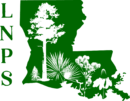Invasive plants are non-native species that cause environmental damage and economic harm where they have been introduced (Definition). Plants are considered non-native if they did not occur in the U.S. prior to European settlement. Some native plant species can be aggressive and spread freely in certain environments or in response to human changes in the environment. Only non-native plants, however, should be considered invasive, since they have no evolutionary ties to the local plant assemblages and tend to have long-lasting, deleterious effects.
Not all non-native plants are invasive, but it’s important to understand that about 1% of all introduced non-native species have become invasive and damaging to the environment. Furthermore, all non-native plants will compete with native flora by taking up space, light, water, and nutrients; therefore, at times even relatively benign non-native plants, compete with native plants for resources. Although non-native species may not cause harm individually, the cumulative effects of non-native species may have a negative effect on native plants and weaken natural community integrity. Unlike our native flora, non-native plants provide little support for native wildlife.
The term “naturalized” is sometimes used to describe non-native plants that have escaped cultivation and established local populations. Used in this way, the term mistakenly implies that the escaped species has become part of the “native” flora. This use is a misapplication of the term. The use of “naturalized” therefore may be confused with “native” and should be avoided.
